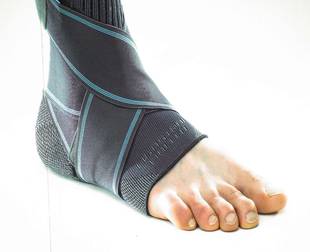
Fractures
A fracture usually occurs as a result of a fall, a blow, or other traumatic event. If you suspect a fracture, the proper approach is to protect the affected area from further damage. Do not try to set the broken bone. Reduction (a medical term for the process of setting the bone) is to be left to a physician. Obvious signs of a fracture may include the following:
1. Swelling or bruising over a bone.
2. Deformity of the affected limb.
3. Localized pain that is intensified when the affected area is moved or when pressure is applied to it.
4. Loss of function in the area of injury
5. A broken bone that has poked through adjacent soft tissues and is sticking out of the skin.
First Aid Treatment for Fractures:
1. Look for more serious injuries. Make sure air passages are not blocked. Give artificial respiration or cardiac massage if necessary.
2. Stop the bleeding.
3. Immobilize the fracture to prevent further injury and to relieve pain. Cover all open fractures with a clean pad of cloth.
4. Seek medical help or bring the injured person to the nearest hospital, possibly to an orthopedic hospital.
Things to Remember When Immobilizing Fractures:
1. Immobilize all fractures before moving an injured person, unless he is in a position of further danger. Use banana trunks, folded newspaper, pieces of wood, bark or cardboard as temporary splints.
2. Immobilize the joints above and below the fracture site. Example: for fracture of the leg, immobilize the knee and ankle joints.
3. Immobilize the affected limb in a position most comfortable to the individual.
4. Apply pads to fill in the natural hollows of the body - under the ankle, under the wrist, and below the knee. Pad also any body joints. In applying splints, the tie should not be too tight so as not to affect adequate blood flow to the injured part.
5. In case of open fractures, never put the bone back into the wound. Wash the wound with sterile solution of salt and water. Cover the splint and refer injured person to the nearest hospital. Antibiotic treatment should be started as soon as possible, as per doctor's direction.
6. Severe deformity should be referred to a hospital, preferably the nearest orthopedic hospital.
Splinting Fractures
1. wrist or forearm fracture
2. shoulder fracture
3. elbow fracture
4. upper arm fracture
5. rib fracture
Sprains
A sprain occurs when trauma such as a violent twist or stretch causes the joint to move outside its normal range of movement and the ligaments are torn. The usual indication of a sprain are the following:
1. Pain and tenderness in the affected area
2. Rapid swelling, sometimes accompanied by discoloration of the skin
3. Impaired joint function
First Aid Treatment
For most minor sprains, you can probably treat the injury yourself. The combination treatment approach is termed P.R.I.C.E. for protection, rest, ice, compression, and elevation. The steps are described below.
Protection
Immobilize the affected area to encourage healing and to protect it from further injury. Use elastic wraps, slings, splints, crutches, or canes as necessary.
Rest
Avoid activities that cause pain or swelling; rest is essential to promote tissue healing.
Ice
Apply ice immediately to decrease swelling, pain and muscle spasm. Ice packs, ice massage, or slush bath are all useful applications. Reapply the ice periodically for the first day or two.
Compression
Swelling can result in loss of motion of an injured joint, so compress the injury until the swelling has ceased. Wraps or compression bandages are best for this purpose.
Elevation
Raise the swollen arm or leg joint above the level of the heart to reduce swelling. This is especially important at night.
Serious Sprains
If an audible popping sound and immediate difficulty in using the joint accompany the injury, seek immediate medical care. If you suspect bone or serious ligament damage in the joint or if the pain and difficulty in moving the joint do not recede within two or three days, seek professional medical care. Your physician may prescribe an x-ray examination to determine the presence of a fracture.
Dislocation
A dislocation is an injury in which the ends of bones are forced out of their normal positions. In most cases, it is a blow, a fall, or other trauma that causes the dislocation, although in some cases an underlying disease such as rheumatoid arthritis, a congenital weakness, or a joint weakened by previous dislocations can be the cause.
The usual signs of dislocation are as follows:
1. An injured joint that is visibly out of position, misshapen and difficult to move
2. Swelling and intense pain
First Aid Treatment
Do not try to return the joint to its proper place unless you are trained on how to do it. Have a physician examine and obtain an x-ray of any suspected dislocation as soon as possible. In the case of a suspected neck and back injury, however, do not move the injured person.
The dislocation should be treated as quickly as possible: if it is not treated within half an hour, the swelling and pain are usually such that treatment without an anesthetic is more difficult. Further damage can result from improper attempts at joint manipulation.
Splint the affected joint in its fixed position, treat it as you would a fracture. Seek immediate medical attention.


















